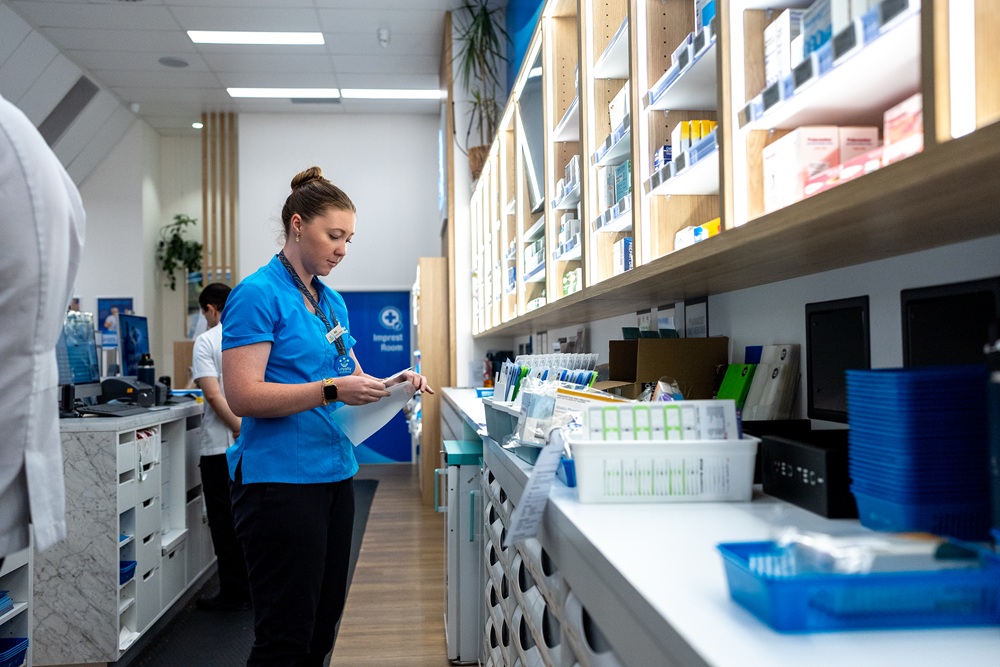The inquiry examined the rates of pay for all pharmacist classifications in the PIA, including interns. Historically, the PIA and its preceding awards were never aligned with the Metals Framework set out in the Metals Industry Award 1976, which is considered the standard for well-fixed wages. The Metals Framework is a trade focused structure, but it included a proposed theoretical rate for four-year degree-qualified professionals, known as the C1(a) rate, which Nurses and Teachers have recently had their wages aligned to.
Gender undervaluation
On 16 April 2025, the Expert Panel concluded that there was sufficient evidence to support the claim of gender undervaluation in the community pharmacy industry. The panel noted that community pharmacy is predominantly a female profession, and the proportion of women in the field is increasing. As such, they suggested that women are more affected by the misalignment between the PIA and the Metals Framework than men. Furthermore, the panel indicated that female pharmacists are more likely to be paid the award rate than male pharmacists, exacerbating the effect of undervaluation.
The FWC decided in favour of aligning the pharmacist rate with the C1(a) for a registered to practice four-year degree qualified professional. This result was expected by both the Pharmacy Guild of Australia and the Association for Professional Engineers, Scientists, and Managers as the two major industrial bodies appearing in the PIA portion of these proceedings. This decision will increase the underlying weekly rate for pharmacists paid at the award rate from $1,337.60 to at least $1,525.90 over a threeyear period. The current relativities in the PIA for professional classifications will be retained, and will all receive a 14.1% pay increase by the 2027/28 financial year, as outlined in Figure 1.
Figure 1. Comparison of current rate and new (final) rate by employment classification
| Employment Classification | Current Weekly Rate in PIA | New Weekly Rate |
|---|---|---|
| Pharmacy intern - 1st half of training | $1089.00 | $1242.30 |
| Pharmacy intern - 2nd half of training | $1126.10 | $1284.60 |
| Pharmacist | $1337.60 | $1525.90 |
| Experienced pharmacist | $1465.10 | $1671.30 |
| Pharmacist in charge | $1499.60 | $1710.70 |
| Pharmacist manager | $1671.00 | $1906.20 |
The increases to the rates of pay will be phased in equally over a three-year period, with the first increase in force from 30 June 2025. The two subsequent phase-in dates to achieve the new wage rate are 30 June 2026, and 30 June 2027 respectively.
Figure 2. Phase in increase from 20 June 2025 (Stage 1)
| Employment Classification | Phase in Stage 1 Weekly Rate | Increase in $ value from current rate |
|---|---|---|
| Pharmacy intern - 1st half of training | $1140.10 | + $51.10 |
| Pharmacy intern - 2nd half of training | $1178.90 | + $52.80 |
| Pharmacist | $1400.40 | + $62.80 |
| Experienced pharmacist | $1533.80 | + $68.70 |
| Pharmacist in charge | $1570.00 | + $70.40 |
| Pharmacist manager | $1749.40 | + $78.40 |
These figures will change in accordance with the FWC’s Annual Wage Review Decision, which will vary minimum wages by a further 3.5% from the start of financial year 2025/26. The phase-in of the increase will also be subject to the next 2 years’ Annual Wage Review Decisions, so the final wage rates will be higher than those set out in the FWC gender undervaluation decision.
The increase in the award rate signifies substantial recognition of the crucial services provided by pharmacists to Australian communities. With the implementation of evolving practice initiatives nationwide, the scope of healthcare services that community pharmacists are empowered to perform has reached an unprecedented level. This expanded scope not only enhances the role of pharmacists within the healthcare system but also improves public access to healthcare. This FWC decision acknowledges the significant contributions of pharmacists and aims to ensure that their remuneration accurately reflects the value of their work. By addressing historical gender undervaluation, the FWC’s decision sets a precedent for other industries, promoting gender equity and fair wages across the Australian workforce.











